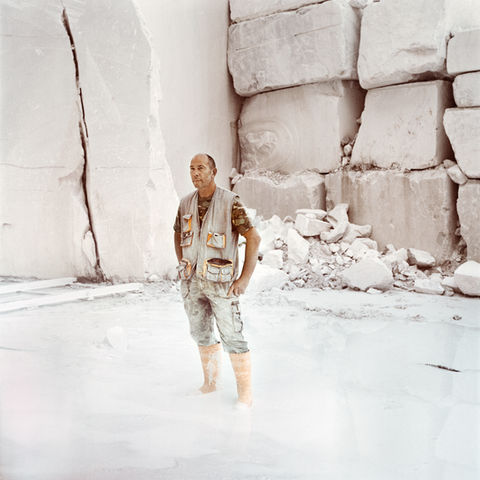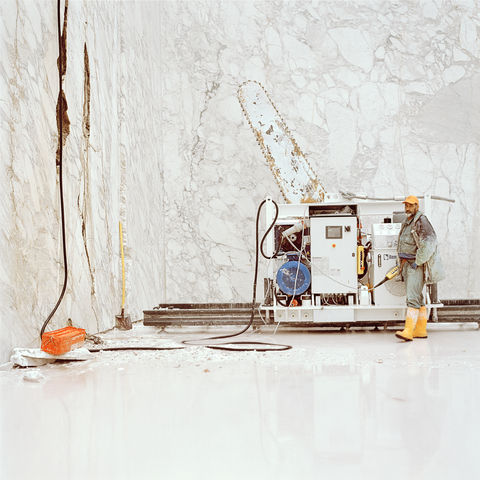MARMO
In the summer of 2015, I visited a marble quarry near the village of Vagli di Sotto in Tuscany, renowned for producing some of the finest marble used worldwide to adorn iconic buildings, including the floors of St. Paul’s Cathedral. This legacy instills a deep sense of pride in the local community, who cherish their quarry and its exquisite stone.
The project, "Marmo" (meaning marble in Italian), explores the breathtaking vistas of marble quarries—sharp-edged cross-sections of the Tuscan mountains that have become even more magnificent than the world landmarks adorned with their stone. The marble industry is among the oldest and largest globally, with Italy at the forefront of marble production since Roman times. Advances in technology have intensified quarrying, resulting in vast man-made landscapes rich in graphic detail and vertical perspectives. Light illuminates and reflects off every surface, erasing shadows, while the constant hum of automated machines and diamond cutting wires is intermittently punctuated by brief silences, sudden rock blasts, and yet more machine noise, creating an extraordinary acoustic environment. Everything within the quarry feels unnatural, sharply contrasting with the surrounding landscape.
Periodically, quarrymen emerge and disappear amidst the dust and mountain fog, distant figures in high-visibility clothing. Despite their size, they appear dwarfed by the towering rock walls that loom over them. As they tirelessly extract this precious stone, one cannot help but ponder the stark imbalance between humanity and the scale of its intervention.
Much of my work revolves around the themes of "place, identity, and scale," and this project is no exception. It does not aim to provide answers or pass judgment on deep mountain excavation; instead, I view it as a thought-provoking exploration of humanity's capacity to extract from nature while reshaping the landscape on a massive scale. Some may see marble quarries as monumental sculptures or art installations, while others may focus on the resulting environmental disruption—or perhaps both.













